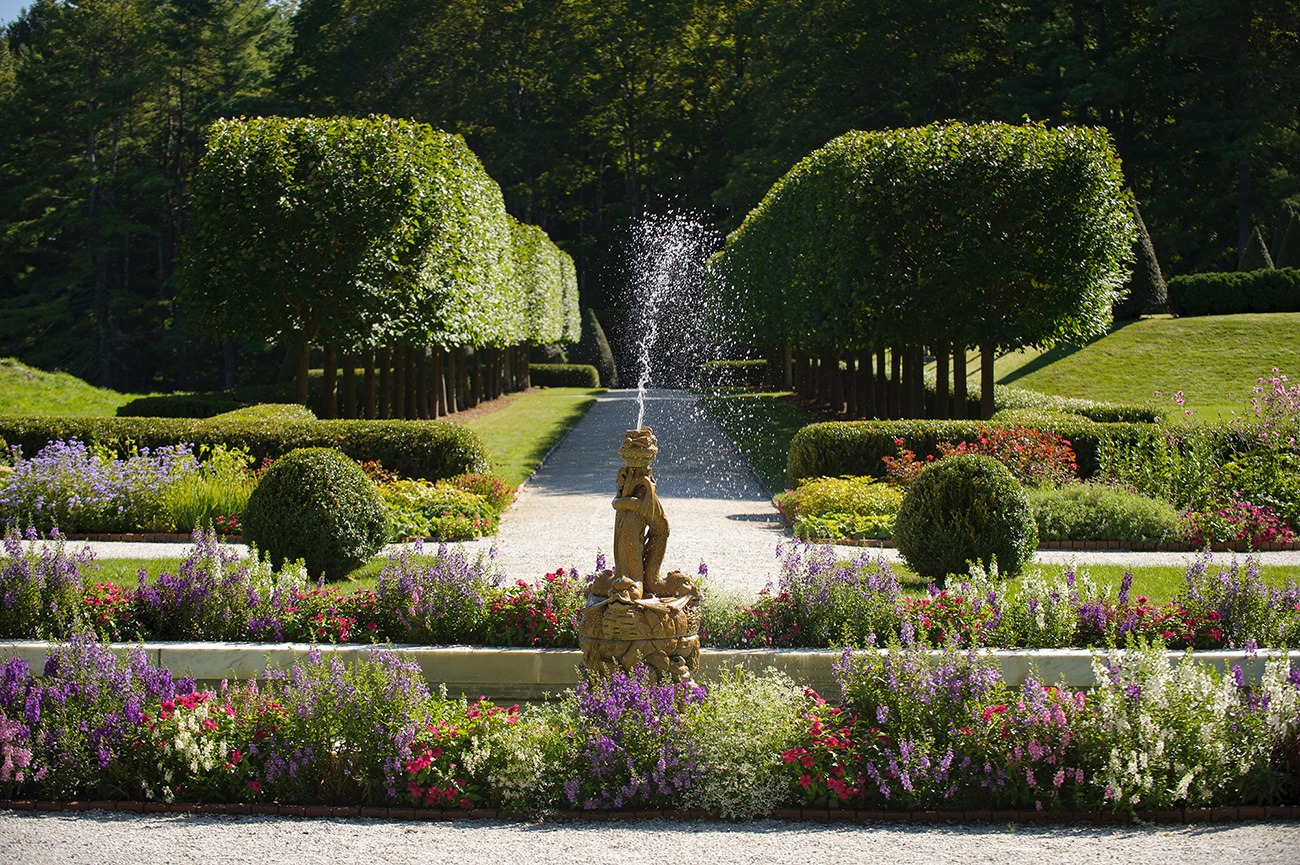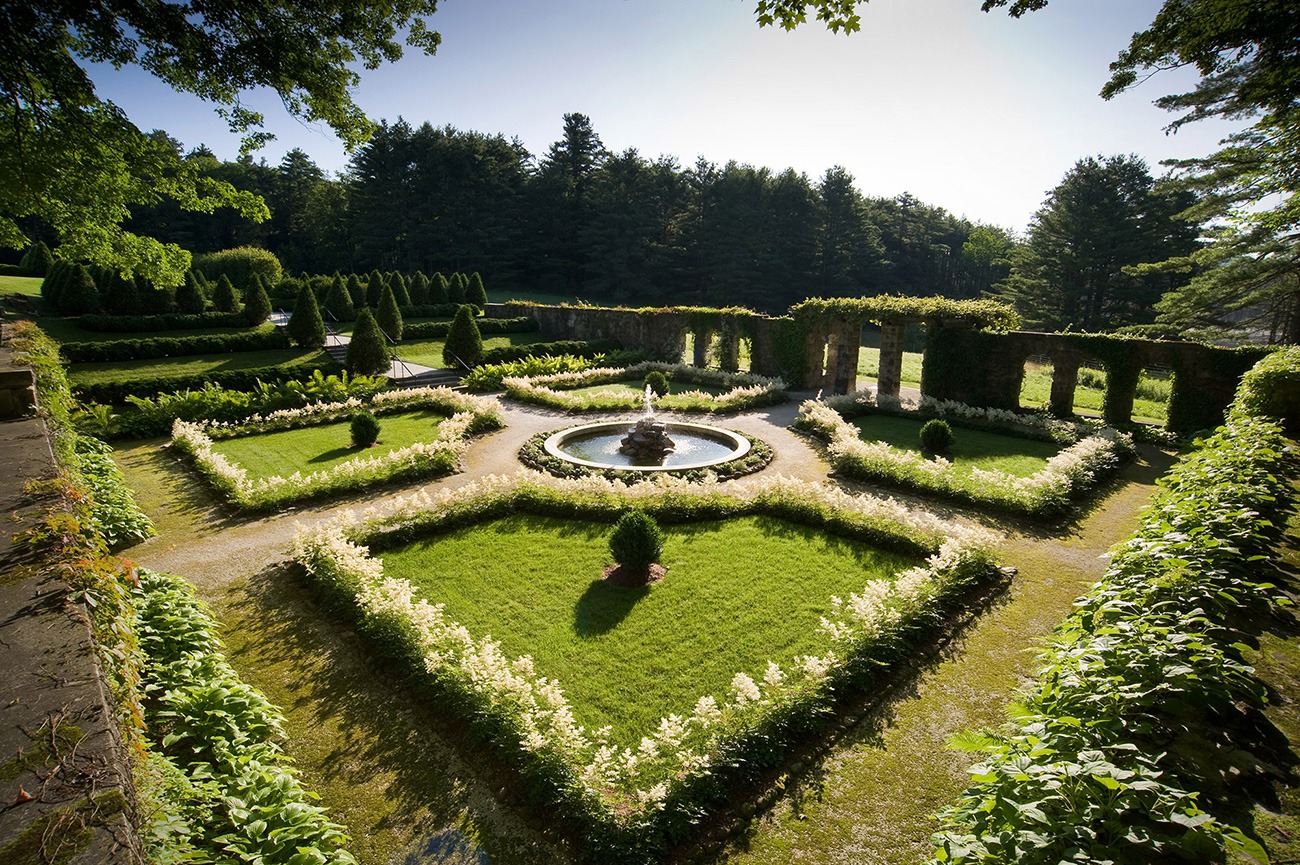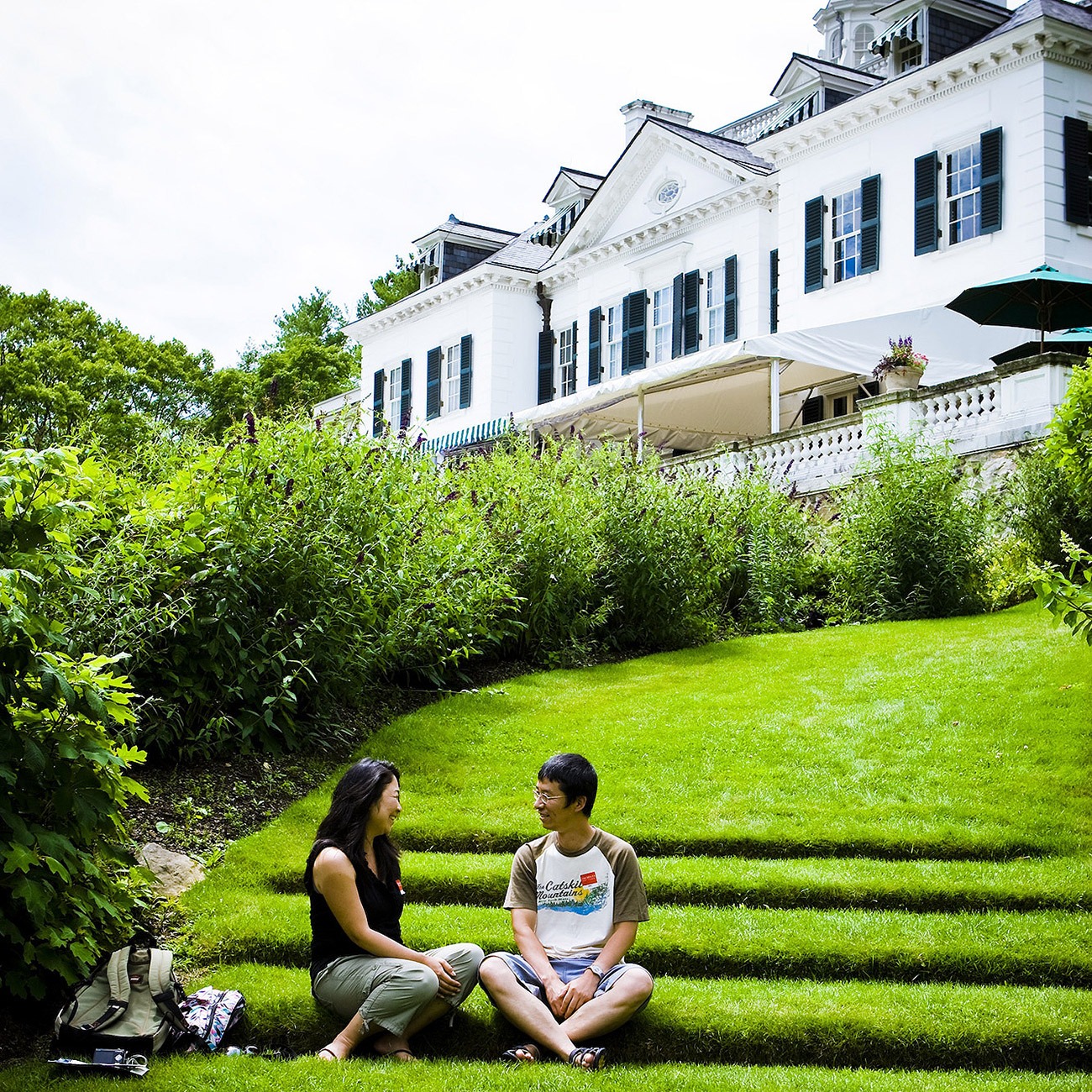“…In the blending of different elements, the subtle transition from the fixed and formal lines of art to the shifting and irregular lines of nature, and lastly in the essential convenience and livableness of the garden, lies the fundamental secret of the old garden-magic…”
Gardens, as Wharton elaborated in Italian Villas and Their Gardens (1904), should be architectural compositions just like houses. She envisioned her gardens as an elegant series of outdoor rooms, in harmony with the house and the surrounding natural landscape. Today, you can experience much of Wharton’s original design for the gardens.

Wharton’s niece, Beatrix Jones Farrand, was just starting her illustrious career as a garden designer when Edith Wharton created The Mount’s gardens and contributed drawings of an extensive kitchen garden.
The sunken Italian Garden uses serene tones of greens and whites which, combined with porticos and alcoves in the stone walls, creates a cool, shady respite from summer sun. The centerpiece of this garden is a rustic rock-pile fountain surrounded by white begonias.

A gravel promenade of pleached linden trees, known as a Lime Walk, connects the Italian Garden to the more formal French Flower Garden. The French Flower Garden’s rectangular pool is surrounded by beds of annuals, perennials and shrubs creating vivid but orderly burst of colors. Wharton loved phlox, stocks, lilies, hydrangea, dianthus, delphinium, and dahlias, all of which still grace the flower beds.
The gardens also include a Rock Garden complete with molded Grass Steps cut into a sloping hill, a landscape feature rarely seen in America.

